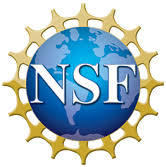Paper Submission
All papers must be submitted electronically in PDF format through the ISRR 2017 online submission system.
Paper Type
Papers for ISRR 2017 may be submitted in two types:
Long Format: We welcome papers of up to 16 pages (including references), in Springer format (see below), that describe thought-provoking research ideas or directions for which there is already established implementation or evidence. Selected papers will be organized into topical panels for presentation, debate and discussion.
Blue Sky Ideas Format: In cooperation with the Computing Community Consortium (CCC), we encourage submissions to a special “Blue Sky Ideas” track. These are shorter (target length 6 to 8 pages, including references) papers which describe visionary ideas, long term challenges, and opportunities in research that are outside of the current mainstream topics of the field and which will provoke discussion or debate.
Formatting Instructions
Submitted papers should follow the LaTeX format given by the template for the Springer SPAR series under the "Instructions for Author" tab in the "Proceedings and other Multi-Author Volumes" section. Papers may also use the LaTeX template available here. Papers may not exceed 16 pages, including references.
Keywords: Specify 1 or more keywords that describe the paper. These will be entered in the submission form and should be noted at the beginning of the abstract, both on the paper PDF file as well as in the abstract textbox form in the submission system.
Topics and Program Committee Member Assignments
In your submission, you should select one primary topic (called subject areas in CMT). You may select multiple secondary topics (subject areas) as needed.
| Control: | Sami Haddadin (Leibniz Universität Hannover & FRANKA EMIKA) & Eiichi Yoshida (AIST) |
|---|---|
| Design: | Masayuki Inaba (University of Tokyo) & Daniela Rus (MIT) |
| Haptics: | Francois Conti (Stanford University) & Marcia O'Malley (Rice University) |
| HRI: | Aude Billard (École Polytechnique Fédérale de Lausanne) & Julie Shah (MIT) |
| Learning: | Dieter Fox (University of Washington) & Ben Kuipers (University of Michigan) |
| Manipulation: | Antonio Bicchi (Universita di Pisa e Instituto Italiano di Technologia) & Jing Xiao (UNC Charlotte) |
| Motion: | Jean-Paul Laumond (LAAS) & Yoshihiko Nakamura (University of Tokyo) |
| Perception: | Darius Burschka (Technische Universität München) & Jana Kosecka (George Mason University) |
| Planning: | David Hsu (National University of Singapore) & Lydia Tapia (University of New Mexico) |
| Systems: | Tamim Asfour (Karlsruher Institut für Technologie) & Gaurav Sukhatme (University of Southern California) |
| Other application: | Nancy Amato (Texas A&M University) & Greg Hager (Johns Hopkins University) |
| Other fundamental: | Nancy Amato (Texas A&M University) & Greg Hager (Johns Hopkins University) |
Supplementary Multi-Media Attachment (Optional)
A optional supplementary multi-media file can submitted. They have the same submission deadline as the manuscript. They are submitted separately from the manuscript. Authors will receive a link for the supplementary file after a submission is made. The maximum file size is 10 Mb. Accepted formats are mpg, mpeg, and mp4.
Review Process
All papers submitted to ISRR 2017 will undergo a peer-review process. Each manuscript will be reviewed by at least two reviewers who will give detailed comments.
All papers are reviewed using a single-blind review process: authors declare their names and affiliations in the manuscript for the reviewers to see, but authors do not receive information about who has reviewed their manuscript.
Plagiarism and Excessive Re-use of Earlier Material: The content of any submissions should be original and must not be submitted simultaneously for consideration towards publication in any other conference or journal.










